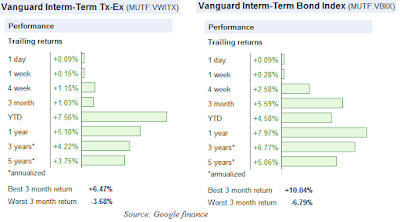
Credit cards typically report various information to the three credit bureaus (
Experian,
TransUnion, and
Equifax). The three main figures that a credit card reports are your
payment history, your current balance, and your credit limit. Each contribute to your
FICO Score, which is key in determining if lenders loan you money and what interest rate they charge you. The higher your score, the lower the risk you are deemed and more likely to get a better deal.
Payment history (on-time payments, long-term reliability) is approximately 35%, length of credit history is 15% (firms like to see you've established a pattern over a long period of time; for this reason,
don't cancel your oldest credit card unless you really have to), inquiries are 10% (excessive applications for credit in the last year makes it appear that you're taking on more debt than you can handle), mix of credit is 10% (more favorable to have different kinds of accounts), and finally your utilization or debt is 15%, which uses your credit limit to calculate.
I recently received my credit report and much to my chagrin, one of my credit cards reported my high limit and credit limit as $0, even though my credit limit is far greater than that. This affects the
credit utilization, which is calculated simply by dividing your combined credit balances by the total credit limit. You want it to be as low as possible, with the highest
FICO scorers having a utilization below 10%. For example, say somebody has two credit cards: one with a $5,000 limit and the other with a $10,000 limit. For the card with a $5,000 limit, they have a $1,000 unpaid balance while the $10,000 limit card has a $2,500 balance. Assuming both cards report their credit limits, this person's credit utilization would be about 23% ($3,500/$15,000). However, if your $10,000 limit card reports the credit limit (and high limit) as zero, your utilization shoots up to 70% (!) for no fault of your own. You should
always strive to be below 35%.
I'm honestly not exactly clear as to what the advantage is for the company to not report your limits - I believe it has to do with a competitive advantage and making it more difficult for other companies to get your business. To me, it is incredibly annoying and should be illegal, but it's not.
Apparently, there a wide variety of credit cards that don't report credit limits. Instead, some of them report your high balance as your credit limit. That is, the highest balance you have ever had on that card effectively becomes your credit limit for credit reporting/scoring purposes. If you had a large purchase one month, but typically only charge a few hundred dollars, then this might not be a huge difference for you. On the other hand, if your spending is consistent on the card and your balance and high limit are close, then it might be an annoyance. Reportedly, American Express Charge Cards report your high limit instead.
Others, including mine, still leave the high limit as $0. All else being equal (rewards,
APY, etc.), I'd avoid such credit cards. This is my oldest credit card though, so I'm keeping it open to enhance my credit length. For your information, it's the
Citi AAdvantage MasterCard. Frequently,
no pre-set spending limit cards also don't report your credit limit as well as Capital One cards.
In the end, this isn't something I looked into when choosing a credit card, but it might be something you want to consider. For me, I barely use that particular card so it won't make a huge difference, but it still would be nice to lower my utilization percentage. Just my annoyance of the day.
Note that this is the first post unrelated to investing and more in the personal finance realm. Future posts may also be in this category as this blog is broadening in its scope.
 REAL ESTATE INVESTMENT TRUSTS
REAL ESTATE INVESTMENT TRUSTS

















